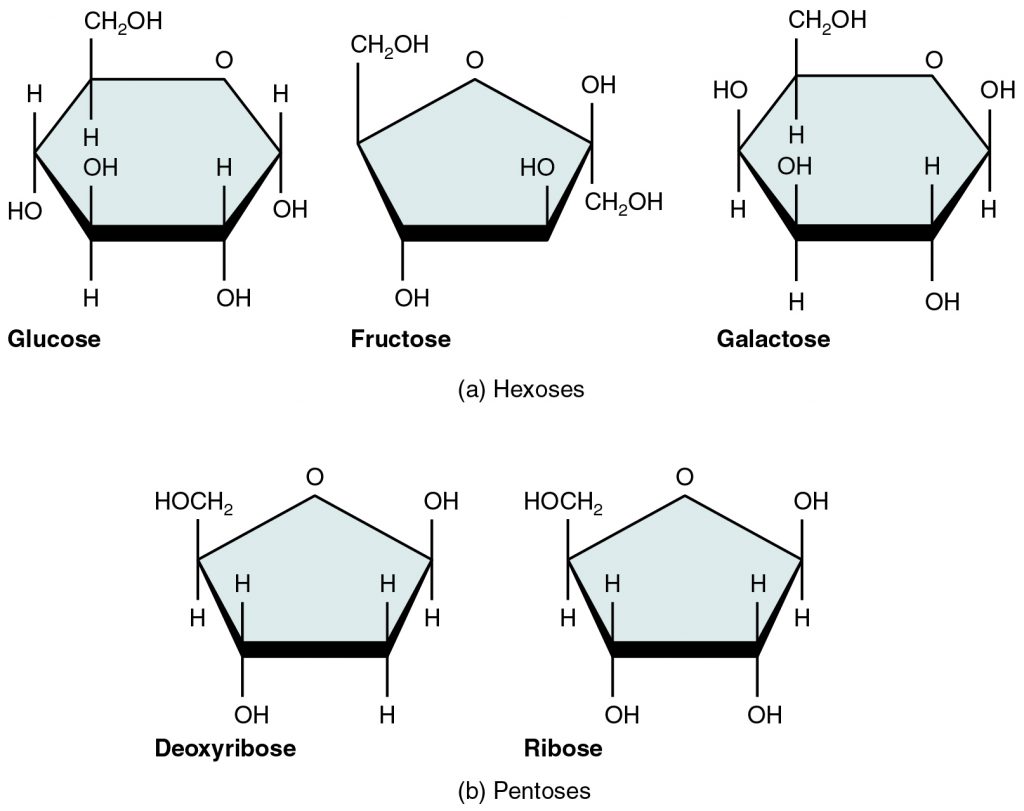[Article updated on 19/09/2023]
The distinction “fast sugars VS slow sugars” refers to the rate at which carbohydrates are digested and converted to glucose. This is important for several reasons. For example, slow-digesting and fast-digesting carbohydrates have different effects on blood insulin and glucose levels. This has ramifications for appetite and body weight management, as well as the control of blood fats such as triglycerides. Generally speaking, slow sugars are more desirable than fast sugars for good health.
Spotlight on carbohydrates to better understand the concept “Fast sugars Vs slow sugars”
Carbohydrates, also known as carbohydrates, are molecules composed of carbon, oxygen and hydrogen atoms. They belong to the saccharide family, a biochemical family including sugars, starch and cellulose. Saccharides are divided into four groups, namely monosaccharides, disaccharides, oligosaccharides and polysaccharides.
Monosaccharides and disaccharides, the smallest carbohydrates by molecular weight, are commonly called sugars. The word saccharide comes from the Greek word σάκχαρον (sákkharon), meaning “sugar”. While the scientific nomenclature of carbohydrates is complex, the names of monosaccharides and disaccharides very often end in the suffix “ose”. For example, grape sugar is glucose, a monosaccharide, cane sugar is sucrose, a disaccharide, and milk sugar is lactose, another disaccharide.
Carbohydrates are found in a wide variety of foods. The main sources are cereals (wheat, corn, rice), potatoes, sugar cane, fruits, table sugar (sucrose), bread, milk, etc. Starch and sugar are the most important carbohydrates. Starch is abundant in potatoes, corn, rice and other grains. Sugar appears mainly in the diet as sucrose (table sugar) added to drinks and many prepared foods such as jam, biscuits and cakes, as well as glucose and fructose naturally occurring in many fruits and vegetables.
Carbohydrates are one of the most important nutrients and the body’s main source of energy. It is very difficult, if not impossible, to eat a meal without carbohydrates. Most foods (rice, bread, fruits, vegetables, milk and others) contain mainly carbohydrates. Carbohydrates are the body’s source of instant energy.
At the molecular level, all carbohydrates are chains of simple sugars. For the body to use carbohydrates, the molecule must first be broken down into individual sugars in the intestines. Depending on the structure of the carbohydrate molecules, this digestion process can take place quickly or slowly, hence the differentiation Fast sugars VS slow sugars. The glycemic index measures how quickly this digestion process occurs.
Carbohydrates are officially categorized into simple and complex sugars. The primary building block of all carbohydrates is the glucose molecule. Simple carbohydrates are relatively short chains of glucose that may contain fructose and galactose. Complex carbohydrates are more complex, spiraled, coiled and branched and contain much more glucose.

What is the glycemic index?
The glycemic index is calculated based on how quickly carbohydrates in food lead to a rise in blood sugar levels. The faster carbohydrates are digested, the higher their glycemic index. The slower they are digested, the lower the glycemic index.
Glycemic load, another measure of how well carbohydrates are digested, reflects the overall level of digestible carbohydrates in foods, without taking into account the duration of digestion. The glycemic index and glycemic load interact to describe how the body digests carbohydrates from foods and gives an estimate of how well the body handles carbohydrates.
A food with both a high glycemic index and a high glycemic load can raise blood sugar levels to a level more than the body can handle, disrupting hormones and metabolism and leading to elevated fat. bodily.
Many factors can affect the glycemic index of a food, including processing. In fact, ground and refined grains, where the bran and germ have been removed, have a higher glycemic index than minimally processed whole grains.
The physical form of the food also has an effect on the glycemic index. Finely ground grain is digested more quickly than coarsely ground grain. This is why eating whole grains in their “whole form” like brown rice or oats may be healthier than eating highly processed whole grain bread.
Fiber content is another factor that can affect the glycemic index of foods. Foods high in fiber don’t contain many digestible carbohydrates, which slows the rate of digestion and causes blood sugar to rise more slowly.
We can also note the maturity. Indeed, ripe fruits and vegetables tend to have a higher glycemic index than unripe fruits. The fat content and acid content influences the glycemic index. Meals containing fat or acid are converted to sugar more slowly.
Importance of the speed of digestion of sugars
The pancreas secretes a hormone called insulin in response to glucose entering the bloodstream from the small intestine. Insulin’s main job is to facilitate the movement of glucose from the blood into the cells. However, insulin has a host of other functions, including the production of fat.
When you consume fast-digesting carbohydrates, you risk increasing your blood sugar and insulin levels. David Ludwig, a pediatric endocrinologist, reported in Harvard Medical School’s “Focus” newsletter that the rapid rise in blood glucose leads insulin to stimulate the body to produce more fat, paving the way for insulin resistance and type 2 diabetes.
Fast sugars VS slow sugars: what are the differences in nature?
What is a quick sugar?
Fast sugars are generally considered those with a glycemic index of 55 or higher. This number indicates that after consuming these carbohydrate sources, they will be absorbed into the bloodstream at a much faster rate than their “slower” counterparts.
For example, a regular white baguette has a glycemic index of 95, which means that shortly after consumption the patient will experience an increase in energy and, subsequently, an increase in blood sugar and insulin. The opposite of this would be a bowl of soybeans which have a glycemic index of 15 and will take much longer to fully release the energy from carbohydrates into the body.
Some foods have particularly high glycemic indices. For example, breakfast cereals and corn flakes have a glycemic index of up to 132, a third higher than pure glucose. Potato fries, white jasmine rice or a bowl of cornmeal porridge can have a GI of 100.
Foods that have been shown to contain particularly fast carbohydrates in laboratory tests include candy, short-grain white rice, rice cakes and white bread. We also have pretzels, tapioca pudding, cornmeal, instant mashed potatoes and energy bars. Dried or candied fruits, sports drinks and soda, and instant oatmeal are other examples of foods loaded with fast sugars. Sometimes it’s even difficult to part with it! I also wrote a short article on this subject that you will find right here.

Slow sugars
Slow-acting sugars release their energy over a longer period of time, affecting blood sugar levels much less than fast-acting carbohydrates. Eating slow-acting carbohydrates can help maintain a feeling of satisfaction or fullness after eating because blood sugar levels remain consistently affected and do not show sudden spikes.
Since slow-acting carbohydrates do not cause significant spikes in insulin or blood sugar, they can be very helpful in managing diet and preventing binge eating. An example of a slow-acting carbohydrate meal would be yogurt with some type of fruit such as apples or bananas, or brown rice topped with beans or lentils. Both of these contain foods with a low glycemic index, ensuring a steady release of energy over a longer period of time.
The slowest sugars are, unsurprisingly, heavily weighted towards fruits, vegetables and legumes. In some tests, chickpeas and hummus scored as low as 10 or less on the glycemic index, while milk, plain yogurt, and many other unsweetened dairy products also report very low glycemic scores, making them slow carbs. Starchy pasta ratings are surprisingly low, because the starches are in a form that is slow to digest. Other slow sugar foods include peanuts, most beans, lentils, barley and oats. We also have nuts, whole wheat tortillas, many fruits and unstructured vegetables.
Fast sugars VS slow sugars: what about the health effects?
Effects of slow sugars on health
Slow sugars are ideal for energy because they trigger a slow rise in blood sugar and a gradual release of insulin, which steadily draws sugar from the blood for energy. Foods that have a low glycemic index are low-sugar, unprocessed or minimally processed carbohydrates. For example, wholemeal bread made from whole wheat has a low glycemic index.
Although it may seem counterintuitive, fast carbs slow the metabolism, while slow carbs can help speed up the metabolism. Nutrition and wellness expert Dr. Len Lopez notes that eating low-glycemic, slow-burning carbs can help you lose weight and keep it off throughout the day. High glycemic carbs do the exact opposite and trigger fat storage, which in turn slows the metabolic rate.
Effect of fast sugars on health
Fast carbohydrates should be avoided if possible, as they cause spikes in blood sugar, which in turn trigger an insulin surge. Insulin then works to store excess sugar in the blood as body fat. Numerous epidemiological studies have shown a positive association between a higher dietary glycemic index and an increased risk of type 2 diabetes and coronary heart disease. However, the relationship between glycemic index and body weight is less well studied and remains controversial.
In the race to supply the muscles with energy, fast-digesting carbohydrates have the upper hand over slow sugars. Knowing which carbohydrates digest quickly can help athletes feel more energetic after a tough exercise session and can quickly raise blood sugar levels if they drop too low. Keeping quick sugars on hand after a workout can also make it easier to build muscle. However, you should talk to your doctor about the best carbohydrate options based on your level of health and physical activity.
Fast-digesting carbohydrates can provide a much-needed energy boost and replace carbohydrate stores that may have been burned during the last exercise session. Muscle & Body magazine recommends taking 60 to 80 grams of fast-digesting carbohydrates post-workout to improve muscle growth and recovery. He also recommends eating 50 grams of fast-digesting carbohydrates immediately upon waking to keep stress hormones in check that can otherwise slow metabolism.

Burn more fat by combining slow and fast sugars
The difference between fast and slow carbohydrates is how quickly they are digested and absorbed. Fast carbohydrates trigger rapid spikes in blood sugar levels, spikes that are usually followed by a drop in blood sugar that can worsen the feeling of hunger and greatly reduce the effect. appetite suppressant of a meal. Slow carbs, on the other hand, trigger a more gradual rise in blood sugar, which keeps levels relatively stable between meals.
Combining fast carbohydrates with slow carbohydrates and protein minimizes the risk of a post-meal blood sugar spike and helps stabilize blood sugar levels. This is a definite bonus for those who want to lose weight. Patients who opt for this diet will feel more satisfied and full between meals. They will have fewer cravings caused by low blood sugar. As a result, it will be easier for them to follow a low-calorie diet to lose fat.
While, technically, slow carbs and protein will buffer the effects of fast carbs on blood sugar, you can get more benefits if you opt for healthy fast carbs. Most fast carbs aren’t very healthy. This group includes white rice, white bread, white pasta and sugary foods that offer little nutritional value. On the other hand, slow carbohydrates, for example, dairy products, beans, whole grains, vegetables and whole fruits tend to offer a better nutritional ratio.
Some healthy carbs digest relatively quickly, and these are the best foods to choose as quick sugars. One can opt for fruits like watermelon, raisins or bananas, which offer other nutritional benefits, like vitamin A, iron or vitamin C. One can eat potatoes or sweet potatoes as sources healthy fast carbohydrates. Although a cooked potato, for example, digests relatively quickly, it also provides potassium which supports cardiovascular health.
It will be necessary to include healthy fast carbohydrates in recipes and meals in order to consume them at the same time as slow carbohydrates and proteins. For example, you can combine sweet potatoes with beans, turkey or tofu. The beans provide slow carbs and protein, while the turkey adds an even greater protein boost.
Although you cannot combine fast carbohydrates as an ingredient in a recipe, you can combine them with a slower digesting food to reduce their effect on blood sugar. If we drink juice, for example a fast-digesting carbohydrate, we can wait for the meal instead of sipping it alone. If you choose to indulge in a square of chocolate, it is better to serve it as dessert immediately after the meal, instead of eating it alone as a snack.
Lose weight by combining slow and fast sugars
Carbohydrates have been described as good or bad over the years, but only a good understanding of their effects on the body will help you get the most out of them. It is also important to keep in mind that we should not only focus on the glycemic index as the only indicator of food quality.
If one wants to get the most out of their strength training, it’s a good idea to stock up on certain carbohydrates in order to use glycogen stores as fuel during workouts. If you eat a regular meal with lots of slow-acting carbohydrates like brown rice, certain vegetables, chicken, you need to give the body some time to use the energy from these foods. Eating a large meal 60 to 90 minutes before exercise should ensure efficient energy delivery, providing necessary fuel during the workout.
However, if you want to train half an hour after a meal, foods with a high glycemic index are the most appropriate. Fruits like pineapple, watermelon and dates are a good example of a high glycemic index food.
Replenishing your glycogen stores with an intake of fast-digesting carbohydrates and fast-acting carbohydrates will have a positive impact on recovery, muscle growth and recovery. Here a protein drink made from banana or dates comes in handy. Instead of eating your steak and sweet potato immediately after exercise, you should instead refer to your understanding of carbohydrates and food digestion in order to get the best benefit for the body.

Slow sugars vs. fast sugars: a controversial notion
The classification of carbohydrates into slow sugars and fast sugars is contested by many nutritionists, including Michel Montignac, inventor of the Montignac method, a slimming diet. In the opinion of these experts, the idea that certain sugars are assimilated more quickly than others is completely false. They overcome the fact that simple sugars (sucrose, honey, fruits, etc.) are more easily digested than complex sugars (starch, tubers, legumes).
Proponents of this theory claim that those who made this classification confused the speed with which the stomach emptied with the speed of absorption of nutrients from the digestion of complex carbohydrates. For this, they cite the work of Wahlqvist, a scientist who showed that the blood sugar peak appeared at the same period regardless of the complexity of the carbohydrate ingested.
This reality would not correspond to any physiological reality if we are to believe the words of Professor Slama and Doctor Nelly Danan, both nutritionist researchers in France. The latter prefer the use of the glycemic index which measures the hyperglycemic power of a carbohydrate compared to pure glucose. Despite the numerous studies which support this thesis, the voice of the supporters of this theory remains inaudible to the general public and this idea is little emulated among nutritionists around the world.
